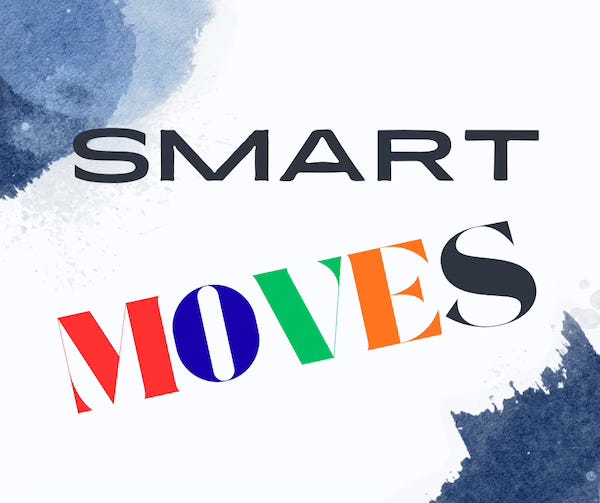The Right MOVES: Moving On From Smart Goals
The Human-Centred Workplace
MOVES recognises the person in the process of goal setting.
Most of you will have heard about SMART goals; you’ve possibly heard far too much. And you can probably recite the mantra:
Goals must be Specific, Measurable, Achievable, Relevant and Timely.
I still like them. They make sense. And regardless of how the buzzwords might change, all the elements of effective goal setting are covered in the SMART checklist.
Well, nearly all....
Wait, there’s more
There's another component that is sometimes overlooked: the human factor.
I've helped lots of groups set up aims, goals and objectives, and I know people tend to engage with goals (or reject them) on the basis of their own preferences and priorities, their personal experiences and expectations, their mindsets and motivations, and their particular strengths and weaknesses.
These highly individualised ingredients in the human mix have a very real effect on a person's approach to even the SMARTest goal setting.
SMART goals, obviously enough, focus on the goals themselves, and on the characteristics of the very best type of goal.
In the process, though, there is a risk of forgetting the human being who is essential to achieving success.
Some time ago, I came up with an added dimension to goal setting, using some ideas that constantly keep the human actors in goal setting very much ‘front-of-mind’.
I called it MOVES.
What does MOVES mean?
MOVES is a prompt – a simple way to remind us to consider a range of human skills, attributes, feelings and experiences, and build them into the process and practice of goal setting.
MOVES stands for:
Motivation. We need to understand what gets people moving and what encourages them to keep up the momentum. It's also important to be aware of personal motivational factors that affect individual effort and achievement
Organisation. This is about putting the human being at the centre, and using times, locations, tasks and resources to construct a plan of human dimensions
Vision. We are imaginative, 'big picture' creatures. Projection and visualisation are essential to planning for success and achieving it
Effort. Visualisation without action is just dreaming. This aspect of the process is about directing energies along satisfying pathways towards successful end points
Sustainability. A process that’s worthwhile and effective should be one people can use repeatedly to bring increased benefits and satisfaction for minimal extra energy.
What does it mean for you?
MOVES recognises the person in the process of goal setting. It puts you, the individual human being, front and centre, and prompts you to:
• Think about your past experiences and future expectations
• Ask questions that are important and relevant for you
• Explore concepts in the context of your life situation
• Apply ideas and possible strategies to your life, here and now
• Take definitive actions that will work for you.
By considering your own human situation, it is easier for you to work successfully on setting and achieving goals, either alone or with others.
Now for some SMART MOVES
Let’s look further into Motivation, Organisation, Vision, Effort and Sustainability, and how they work with SMART goal setting to make it a more human-centred process.
Keep reading with a 7-day free trial
Subscribe to Better Communication to keep reading this post and get 7 days of free access to the full post archives.


